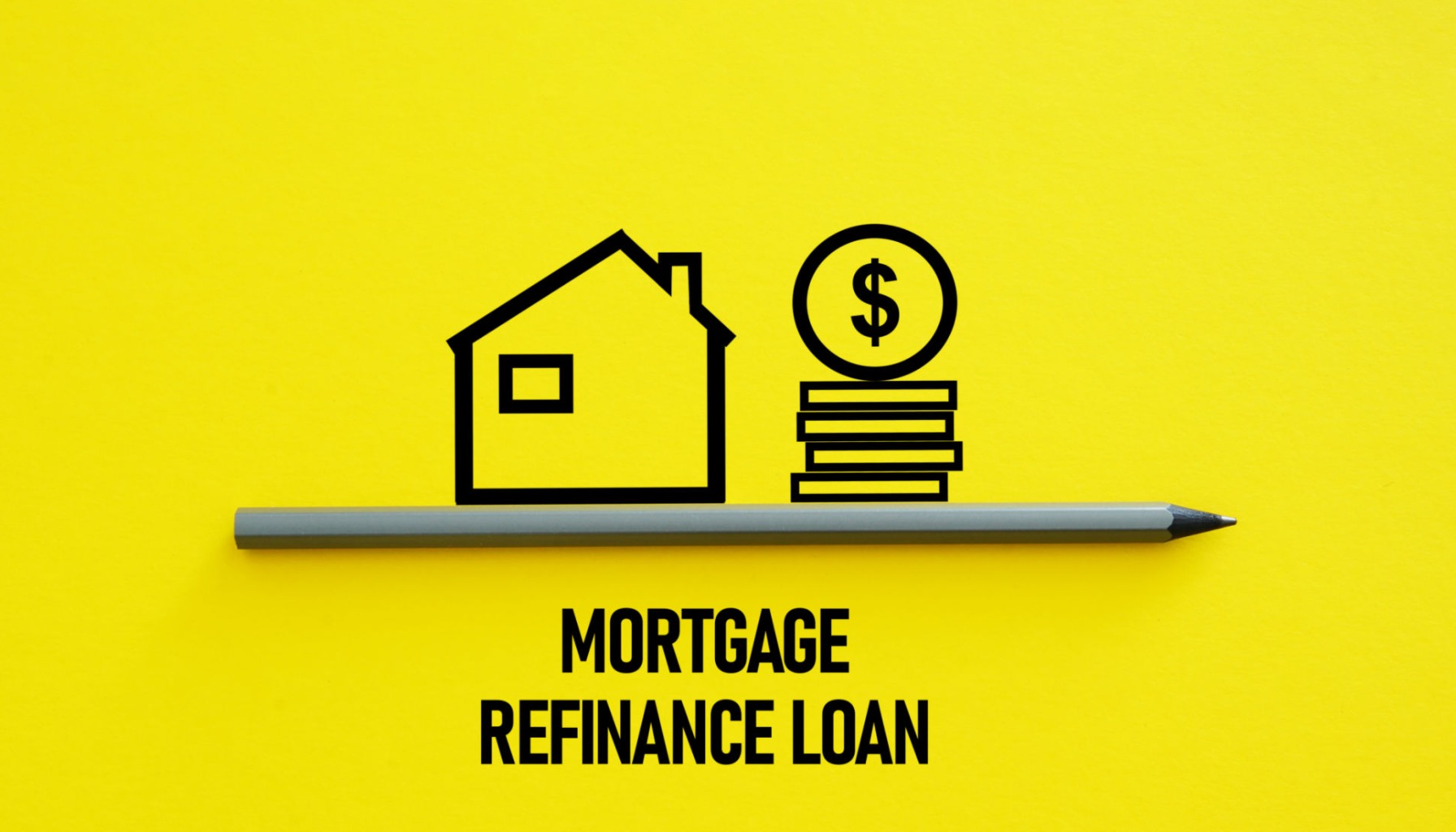Mortgage rates today are showing some exciting movement, with the 30-year fixed refinance rate taking a significant dip. According to Zillow's latest report, this popular rate has plunged by a notable 22 basis points from last week, falling from an average of 6.94% to 6.72% as of Saturday, October 18, 2025. This is a welcome change for many homeowners looking to refinance and lock in a better deal. In fact, the average 30-year fixed refinance rate is now sitting at 6.72%.
This drop is a big deal, and it’s not happening in a vacuum. It’s largely influenced by the Federal Reserve’s recent actions and signals from the Fed Chair. In simpler terms, it means borrowing money for a mortgage is becoming a bit cheaper right now, which could save you a good chunk of change on your monthly payments. For anyone considering a refinance, this is definitely a moment to pay attention to.
Mortgage Rates Today: 30-Year Fixed Refinance Rate Drops by 22 Basis Points
What a 22 Basis Point Drop Really Means for Your Wallet
Let’s break down what those numbers actually mean for you. A “basis point” is just a tiny unit of measurement, equal to one-hundredth of a percent. So, a 22 basis point drop means the rate went down by 0.22%. While that might sound small, on a mortgage, it can add up.
For example, if you're looking to refinance a $300,000 loan:
- At 6.94% (last week's rate), your estimated monthly principal and interest payment would be around $1,999.
- At 6.72% (today's rate), that payment drops to approximately $1,945.
That’s a difference of $54 every month, or $648 over a year! Over the life of a 30-year loan, these savings can be substantial. It’s these kinds of shifts that make watching mortgage rates so important if you’re planning to refinance or buy a home.
Timing Your Refinance: Seizing the Opportunity
With rates moving, you might be wondering if now is the right time to refinance. Based on recent signals from Federal Reserve Chair Jerome Powell, it seems like the Federal Reserve is leaning towards further interest rate reductions in the near future. On October 14, 2025, Powell mentioned that the labor market is showing some weakness, which might lead them to cut rates again.
This is important because the Fed’s actions directly influence mortgage rates. When the Fed cuts its benchmark interest rate, it typically makes borrowing money cheaper across the board, including for mortgages. The Fed already cut its rate once this year, back on September 17, 2025, moving it from 4.25%-4.5% down to 4.0%-4.25%.
If the Fed continues to cut rates, we could see mortgage rates fall even further. Zillow's analysis suggests that future cuts could push mortgage rates towards the 6% range. This outlook suggests that while today's dip is good news, there might be even better opportunities ahead. However, waiting too long could also mean missing out if rates unexpectedly tick back up. It’s a bit of a balancing act.
Comparing Your Refinance Options: 30-Year Fixed vs. 15-Year Fixed
It’s not just the 30-year fixed rate that’s changing. Zillow also tracks other popular options:
- 15-Year Fixed Refinance Rate: This rate actually increased by 7 basis points, moving to 5.81% from 5.74%.
- 5-Year ARM Refinance Rate: This type of mortgage also saw an increase, going up by 9 basis points to 7.29% from 7.20%.
This mixed movement highlights why it’s crucial to look at the whole picture.
| Mortgage Type | Current Rate (Oct 18, 2025) | Change from Previous Week | What It Means |
|---|---|---|---|
| 30-Year Fixed | 6.72% | -22 bps | Plunged, making it cheaper to refinance, ideal for those seeking lower monthly payments. |
| 15-Year Fixed | 5.81% | +7 bps | Increased slightly, still a good option for those wanting to pay off their mortgage faster. |
| 5-Year ARM | 7.29% | +9 bps | Increased slightly, often starts lower but can adjust upwards. Might be less attractive right now. |
Why the Fed's Moves Matter to Your Mortgage
The Federal Reserve doesn't set mortgage rates directly, but its decisions have a huge impact. They control a key interest rate – the federal funds rate – which influences borrowing costs throughout the economy.
Think of it like this: When the Fed lowers its rate, it becomes cheaper for banks to borrow money. This often leads banks to offer lower interest rates on things like car loans and, importantly, mortgages.
The Fed's primary goal is to keep the economy healthy, which means trying to balance inflation (rising prices) with job growth. Right now, they're in a tricky spot. Inflation is a bit high (around 2.9%), but the job market is showing signs of slowing down. Chair Powell’s recent comments suggest they're more concerned about jobs. This concern is a big reason why they might cut rates again soon.
The 10-year U.S. Treasury yield is a key benchmark for 30-year fixed mortgage rates. While the 10-year yield has been fairly stable around 4.12%, the gap between this yield and mortgage rates (called the “spread”) has been larger than usual. This spread wider means that even when Treasury yields fall, mortgage rates don’t always drop by as much. However, the Fed's signals are creating optimism that this spread might narrow, allowing more of those cost savings to reach borrowers.
How Your Credit Score Can Still Impact Your Refinance Rate
Even with these favorable rate drops, your personal financial situation still plays a major role. Your credit score is one of the biggest factors lenders consider when deciding on your interest rate.
- Excellent Credit (740+): If you have a strong credit score, you're likely to qualify for the best advertised rates, like the 6.72% mentioned.
- Good Credit (670-739): You'll likely still get a competitive rate, though it might be slightly higher than the advertised average.
- Fair Credit (580-669): You may still qualify for a refinance, but your rate will probably be significantly higher, and you might face stricter lending requirements.
- Poor Credit (Below 580): Refinancing can be very challenging, and you might need to focus on improving your credit score first.
My advice from years of watching this market? Always check your credit report for errors and work on improving your score as much as possible before applying for a refinance. It can genuinely save you thousands of dollars.
Recommended Read:
30-Year Fixed Refinance Rate Trends – October 17, 2025
What the Future Holds: What to Watch For
The big question on everyone's mind is what happens next. Based on what we're hearing from the Fed:
- More Rate Cuts Likely: Chair Powell's comments strongly suggest more rate cuts are on the table for November or December, especially if the labor market continues to weaken.
- Inflation Watch: The Fed will be keeping a close eye on inflation. If it continues to ease, it gives them more room to cut rates.
- Economic Data: We’ll need clear economic data to confirm the Fed’s path. Any major surprises could change things.
- Spread Narrowing: As mentioned, if the gap between Treasury yields and mortgage rates shrinks, borrowers will benefit even more from Fed rate cuts.
For homeowners considering a refinance, especially those with rates above 6.5%, now is a good time to get your paperwork in order and monitor the situation closely. This dip is a positive sign, and further easing could make refinancing even more attractive in the coming months.
“Invest Smart — Build Long-Term Wealth Through Real Estate”
Norada's team can guide you through current market dynamics and help you position your investments wisely—whether you're looking to reduce rates, pull out equity, or expand your portfolio.
Work with us to identify proven, cash-flowing markets and diversify your portfolio while borrowing costs remain favorable.
HOT NEW TURNKEY DEALS JUST LISTED!
Speak with a seasoned Norada investment counselor today (No Obligation):
(800) 611-3060
Recommended Read:
- When You Refinance a Mortgage Do the 30 Years Start Over?
- Should You Refinance as Mortgage Rates Reach Lowest Level in Over a Year?
- NAR Predicts 6% Mortgage Rates in 2025 Will Boost Housing Market
- Mortgage Rates Predictions for 2025: Expert Forecast
- Half of Recent Home Buyers Got Mortgage Rates Below 5%
- Mortgage Rates Need to Drop by 2% Before Buying Spree Begins
- Will Mortgage Rates Ever Be 3% Again: Future Outlook
- Mortgage Rates Predictions for Next 2 Years
- Mortgage Rate Predictions for Next 5 Years
- Mortgage Rate Predictions for 2025: Expert Forecast



